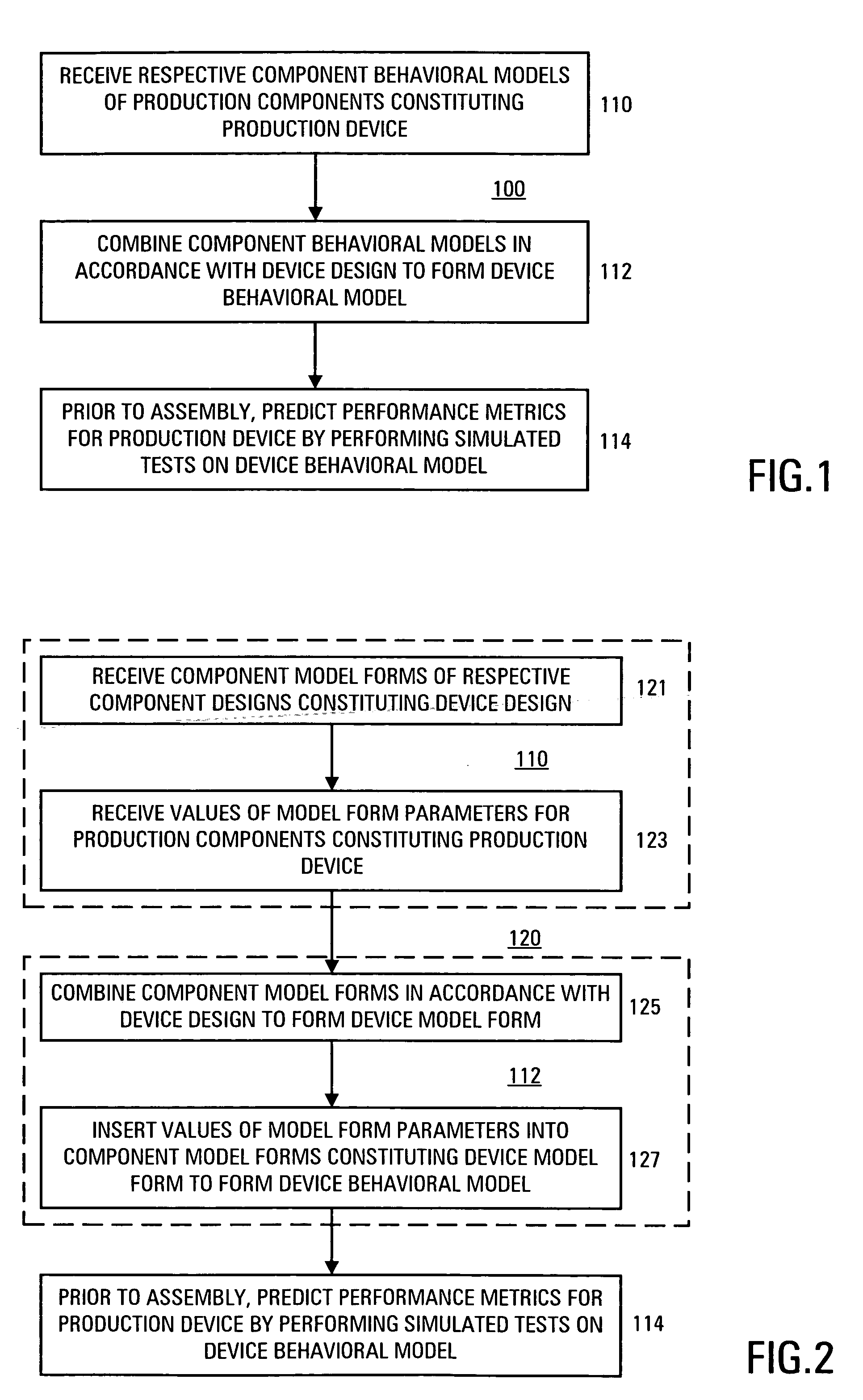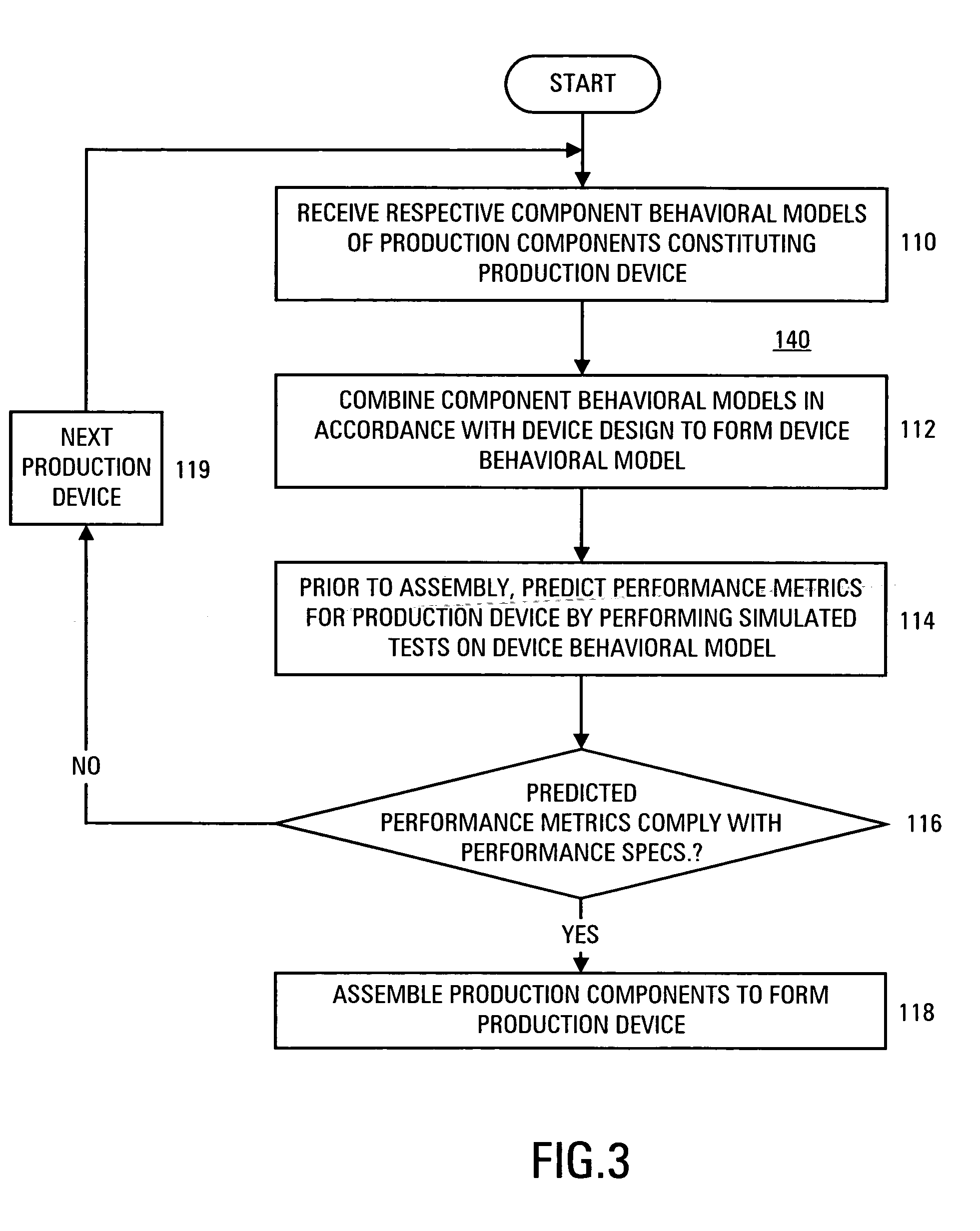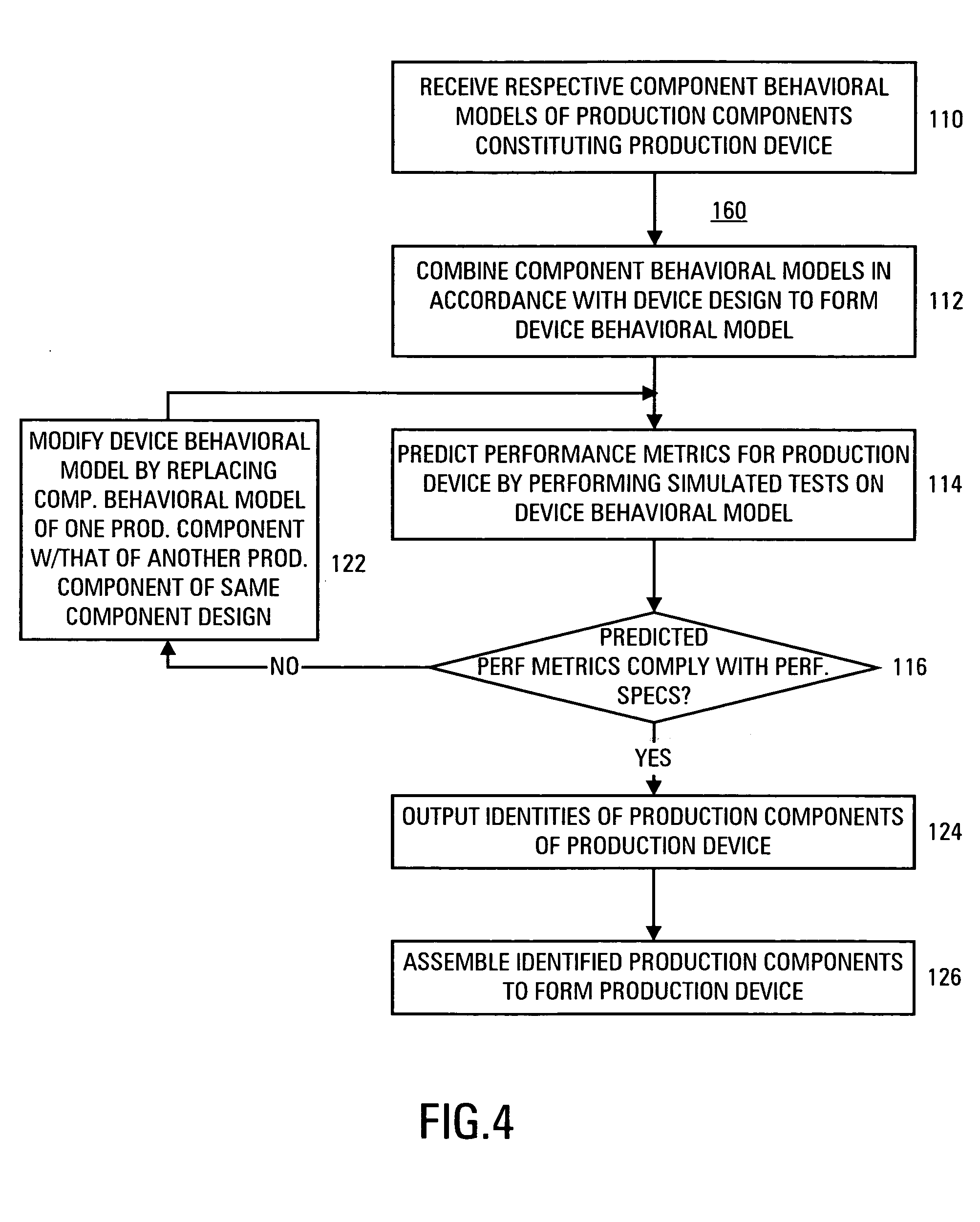Model-based pre-assembly testing of multi-component production devices
a production device and model technology, applied in the field of model-based pre-assembly testing of multi-component production devices, can solve the problems of uneconomical repair of sip, damage to and the inability to undo the connection between the components of the sip without damage, so as to maximize the number of production devices, reduce waste, and increase the productivity of production line test equipmen
- Summary
- Abstract
- Description
- Claims
- Application Information
AI Technical Summary
Benefits of technology
Problems solved by technology
Method used
Image
Examples
Embodiment Construction
[0029] As used in this disclosure, the term component will be used to denote an electronic module having more than one element. A component design defines the structure of a component, relevant parameters of a component manufacturing process used to manufacture multiple instances of the component, i.e., production components, and the performance specifications met by the production components. The performance of a component design is specified by performance specifications of the component design. Conventionally, after manufacture, each component made in accordance with the component design is subject to parametric testing to determine whether its performance metrics comply with the corresponding performance specifications of the component design. A component whose performance metrics all comply with the corresponding performance specifications is classified as good by the production testing and is released for sale.
[0030] In accordance with the invention, in addition to or instead...
PUM
 Login to View More
Login to View More Abstract
Description
Claims
Application Information
 Login to View More
Login to View More - R&D
- Intellectual Property
- Life Sciences
- Materials
- Tech Scout
- Unparalleled Data Quality
- Higher Quality Content
- 60% Fewer Hallucinations
Browse by: Latest US Patents, China's latest patents, Technical Efficacy Thesaurus, Application Domain, Technology Topic, Popular Technical Reports.
© 2025 PatSnap. All rights reserved.Legal|Privacy policy|Modern Slavery Act Transparency Statement|Sitemap|About US| Contact US: help@patsnap.com



